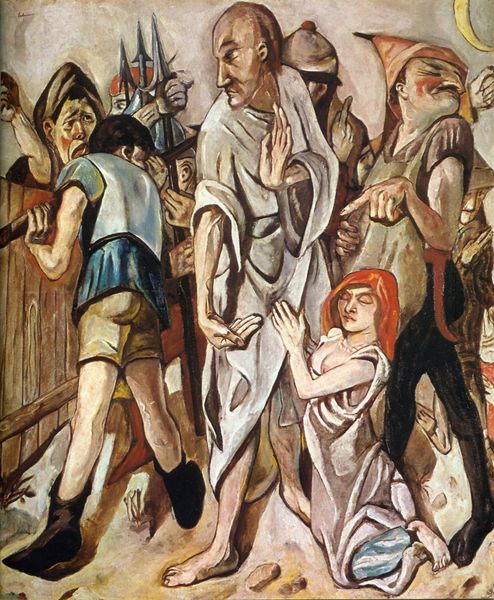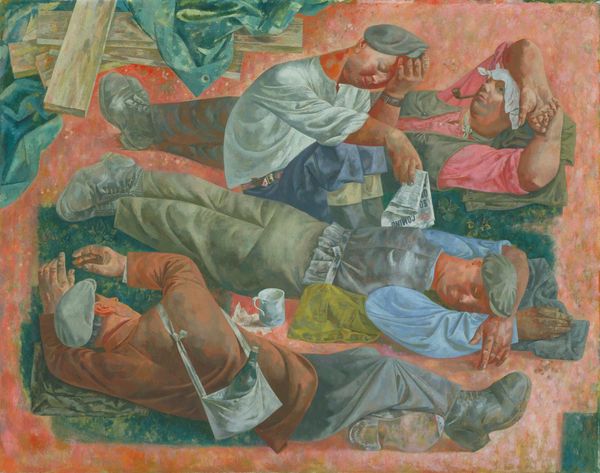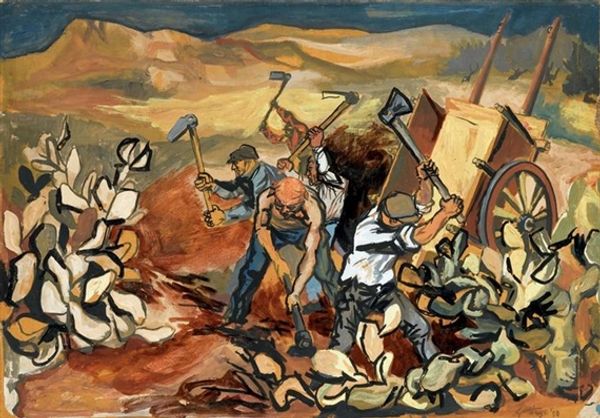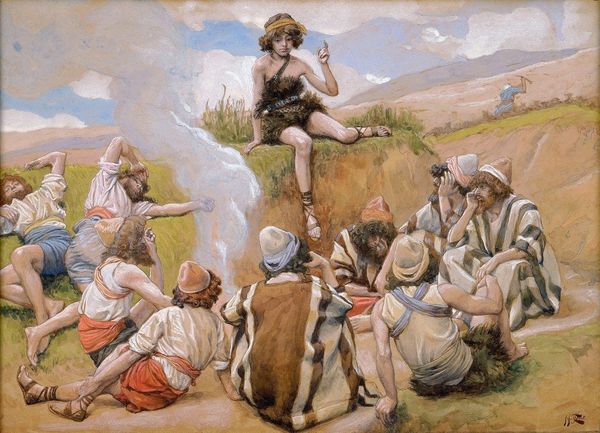
painting, oil-paint
#
portrait
#
painting
#
oil-paint
#
figuration
#
social-realism
#
oil painting
#
group-portraits
#
russian-avant-garde
#
genre-painting
#
realism
Copyright: Public domain US
Curator: This is Zinaida Serebriakova's "Whitening Canvas," painted in 1917. Serebriakova captured a slice of everyday life here, depicting peasant women laundering fabrics. It's an oil painting, very much rooted in the social-realist tradition, even if she's seen as part of the Russian avant-garde. Editor: It hits you with a peculiar kind of beauty, doesn't it? They're toiling, barefoot no less, but their faces don’t convey strain or unhappiness, rather this sense of simple dignity, their forms almost monumental against a barren, yet luminous landscape. Curator: Indeed. Despite the hardships implied, there's a serenity. I think this captures the kind of nostalgic idealism found in early Soviet art – where the focus was not on glamourizing labor for propaganda purposes, but rather celebrating a sense of collective identity. Serebriakova often chose women as her central subjects. It's easy to speculate how much of that impulse has to do with what her station as a female artist during her time would have meant for the works that were shown or validated in those official circles. Editor: Right, they’re presented with such an elegance and strength – it's more complex than just showing work, but a quiet celebration, perhaps? Note the stark simplicity of the garments and the pale tones. The whitening canvas mirrors the pale sky. Even the bare feet connect with the tones in the earth. You feel grounded in their world somehow, right? Curator: Exactly, I mean the earth tones tie the women to the land, evoking a sense of unity. Their postures seem almost choreographed as well—each one holds a particular aspect, but the scene in aggregate becomes greater than its sum. She certainly knew how to communicate with such elegance; how that may speak more about class aspirations rather than real-world class conflicts, however, might be cause for concern if seen with our current understanding of representation. Editor: What’s captivating to me is the lack of overt emotion, allowing us to witness labor without overly romanticizing or lamenting it. Serebriakova is almost saying "this is simply the world", it is raw, unpolished, real life with a side of understated splendor. I would venture that it could apply to aspects of any collective effort from any social order and era. Curator: I couldn’t agree more. Looking closely and seeing this image anew reminds me of what we still miss when we overlook some works for not fitting perfectly within accepted artistic norms. Editor: And for me, I come away remembering how daily activities, especially when rendered with such clarity, possess their inherent grandeur, something one sees and never forgets, which in turn becomes art for all.
Comments
No comments
Be the first to comment and join the conversation on the ultimate creative platform.













